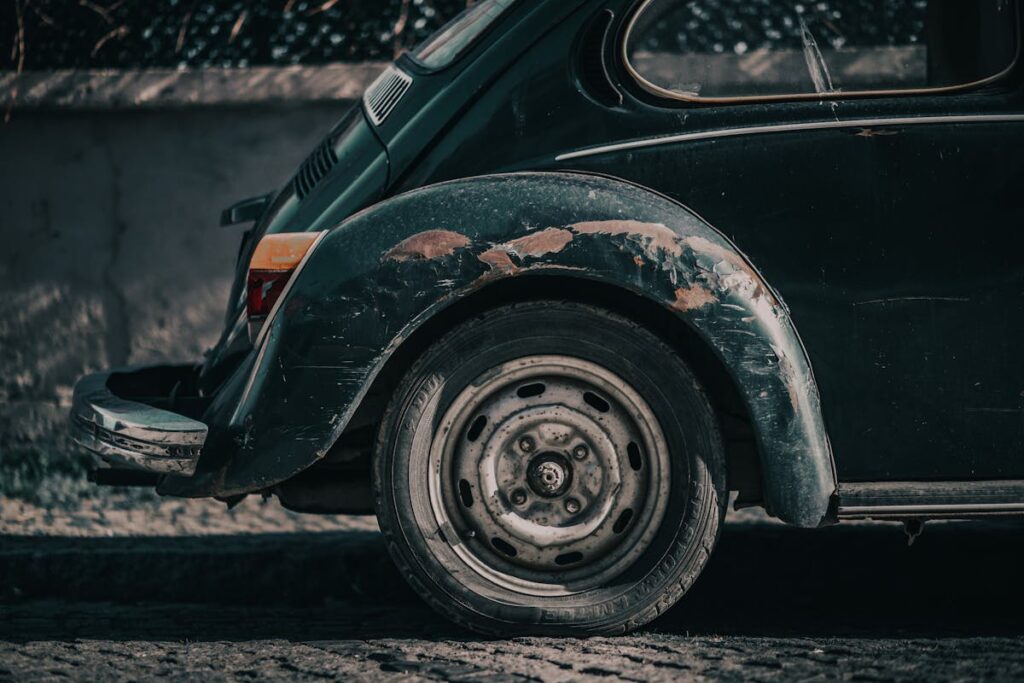The rise in hit-and-run accidents in California demands a thorough understanding of the necessary steps to handle such incidents. As victims, it is imperative to remember that your actions post-accident can greatly impact your safety, legal rights, and chances for compensation. From immediate steps at the accident scene, to liaising with law enforcement and insurance companies, every decision is essential. In addition, the potential value of witnesses and legal representation cannot be underestimated. This discussion aims to inform and assist individuals in managing this often stressful and complicated aftermath of a hit-and-run encounter.
Understanding Hit-and-Run Incidents
An alarming number of motorists worldwide become victims of hit-and-run accident incidents each year. Hit and run statistics reveal a disturbing trend, with both minor and major accidents often going unreported or unresolved. These incidents not only cause physical and emotional distress but can also lead to significant financial burdens for the victims. It’s essential to understand the legal consequences perpetrators face when involved in such incidents – from hefty fines, insurance surcharges, to potential imprisonment. Despite these stringent penalties, the prevalence of hit-and-run incidents continues to rise. Consequently, it becomes imperative for everyone, as responsible citizens, to be informed about these incidents, their consequences, and how we can contribute to their reduction.
Immediate Steps After the Accident
Upon experiencing a hit-and-run accident, your immediate response plays an essential role in ensuring safety and justice. Initially, it’s imperative to secure the scene to prevent further damage and protect evidence. Following this, documenting all pertinent details and promptly reporting the incident to the appropriate authorities will maximize the chances of resolution.
Securing the Scene
In the chaotic moments that immediately follow a hit-and-run accident, priority should be given to securing the scene. This essential step aids in preserving evidence and securing witnesses, both of which are vital for any ensuing investigation or legal proceedings.
Start by ensuring your safety and that of others involved, then turn your attention to the accident scene. If it’s safe, prevent any alterations to the scene that could tamper with evidence. This could include tire marks, car debris, or damaged property. Simultaneously, identify potential witnesses and encourage them to stay until law enforcement arrives. Their eyewitness accounts may prove invaluable. By effectively securing the scene, you lay the foundation for a solid hit-and-run case, enhancing the chances of attaining justice.
Documenting Important Details
After securing the scene of a hit-and-run accident, it is vital to meticulously document all relevant details. Start by capturing photo evidence – photograph the damage to your vehicle from varied angles, any skid marks, the accident scene, and any other elements that seem pertinent. Remember, your images can tell a story that words may fail to express.
Next, gather witness statements. Bystanders may have witnessed the accident unfold and their accounts can provide valuable insights into the incident. Collect their contact information for future reference.
This process of diligent documentation plays a significant role in establishing a thorough record of the accident, providing essential support for insurance claims and potential legal proceedings. It also prepares you for the next step: reporting the incident.
Reporting the Incident
Having collected all necessary evidence and witness statements, the immediate next step in the aftermath of a hit-and-run car accident is reporting the incident. Abiding by reporting timelines is essential in California. Delaying this process may result in legal complications and hamper your chances of filing a successful claim.
Immediately contact law enforcement and provide your thorough accident documentation. This includes your account of the event, witness testimonies, and any photos or videos from the scene.
Persuasively presenting your case, with robust evidence, will aid in the swift apprehension of the perpetrator and facilitate the claim process. Remember, reporting promptly is not just a legal obligation—it’s a vital step towards obtaining justice for the victim.
Gathering Vital Evidence
As unfortunate as a hit-and-run accident is, it’s vital to collect as much evidence as possible to assist in the subsequent investigation. This important process, referred to as evidence collection, may greatly influence the outcome of your case. Immediately after an accident, make sure you document everything meticulously. This includes photographs of the accident scene, your vehicle, any visible injuries, and any other relevant elements. If there were witnesses, gather their contact information and statements. Skid marks or property damage can also serve as important evidence. In addition, keep all medical records and repair bills safe, as they demonstrate the financial impact of the accident. Effective accident documentation is an important step towards achieving justice in these unfortunate circumstances.

Reporting the Incident to Police
Reporting the incident to the police is the next critical step in handling a hit-and-run car accident. Understanding the immediate actions to take post-incident and the proper protocols for police reporting can greatly impact the resolution of your case. We will now discuss these aspects in detail, demonstrating their importance in ensuring justice is served.
Immediate Actions Post-incident
While it can be exceptionally distressing, the initial moments following a hit-and-run incident are essential for guaranteeing justice is served. Amid the emotional aftermath, it’s important to focus on fulfilling your legal obligations. This may seem overwhelming but remember, your actions can considerably impact the outcome of the situation. First, secure your safety and the safety of others. Then, if possible, try to remember details about the offending vehicle and driver. Record the time, location, and direction of the fleeing vehicle. Look around for potential witnesses and ask them to stay until police arrive. These immediate actions will provide critical information for the investigation and will strengthen your case, helping to bring the culprit to justice.
Proper Police Reporting Procedures
Numerous individuals often feel overwhelmed in the aftermath of a hit-and-run accident, causing them to overlook or underestimate the importance of promptly reporting the incident to the police. A timely filed police report plays an essential role in the resolution of such cases. It not only records the vital details of the incident but also initiates the process of evidence collection. This report aids in identifying the offender, facilitating insurance claims, and establishing legal recourse. The police, utilizing their expertise and resources, gather and analyze physical evidence, surveillance footage, and witness testimonies. As a result, immediate contact with law enforcement is imperative. Fulfill your civic duty and protect your rights by adhering to proper police reporting procedures in the wake of a hit-and-run accident.
Dealing With Auto Insurance Companies
After a hit-and-run car accident, it can be quite challenging to navigate the complexities of dealing with auto insurance companies. It’s essential to understand your policy coverage and the claim process to guarantee fair compensation. To begin with, report the accident promptly to your auto insurance provider. Be sure to provide detailed and accurate information about the incident. Next, cooperate with your insurer’s investigation by sharing any photos, videos, or documents that may support your claim. Finally, consider hiring a skilled attorney to navigate the claim process effectively if complications arise. Proper handling of these procedures can help expedite your claim and maximize the chances of receiving just compensation.
Finding Witnesses and Collecting Testimonies
Beyond dealing with auto insurance companies, an equally important step in handling a hit-and-run car accident is finding witnesses and collecting their testimonies. Witness statements and eyewitness accounts can provide pivotal evidence in personal injury claims. It is essential to act swiftly post-incident, as memories can fade or details may become blurred over time. Approach potential witnesses politely, asking if they would be willing to share their account of what happened. Document their testimonies accurately and objectively, ensuring all critical details are recorded. If possible, request contact information for any follow-up. Their testimonies can be used to reconstruct the incident accurately, thereby strengthening your case. This diligent collection of evidence can greatly influence the resolution of a hit-and-run incident.
Identifying the Offender
Unraveling the identity of the offender in a hit-and-run car accident can often prove to be a complex, but vital task. The process typically involves a blend of thorough investigation and the strategic use of available resources. One invaluable tool is witness identification. Witnesses can provide information about the accident, the fleeing vehicle, and sometimes, the driver. Coupled with this, a detailed vehicle description can greatly aid in identifying the offender. This includes noting registration plates, make, model, color, and any distinguishing features. Surveillance footage, if available, can further reinforce these details. It’s important to remember that while this task can be intimidating, it’s an integral step in ensuring justice is served for the victims of hit-and-run accidents.
Seeking Legal Assistance in California
Perhaps you’re wondering what to do after being a victim of a hit-and-run accident in California. One of your first steps should be seeking legal representation. A skilled attorney can guide you through the often complex and intimidating legal process while protecting your rights and interests. They will conduct an in-depth case evaluation to assess the full extent of your damages, gathering essential evidence to build a robust case. Additionally, they can negotiate with insurance companies on your behalf, ensuring you receive a fair settlement. Remember, time is of the essence; California law limits the timeframe to pursue legal action. Consequently, secure legal help promptly to increase your chances of obtaining the compensation you deserve.
Coping and Recovery From the Trauma
While the physical injuries from a hit-and-run accident can be severe, it’s essential not to overlook the emotional and psychological trauma that often accompanies such an incident. Victims may experience a range of distressing emotions, including shock, anger, guilt, or anxiety. Consequently, seeking emotional support from therapists, support groups, family, or friends is vital in the recovery process. Furthermore, implementing recovery strategies such as regular exercise, a balanced diet, and adequate sleep can help in managing stress levels. Additionally, engaging in mindful activities like meditation or yoga can also be beneficial. Remember, it’s not just about recovering physically; emotional healing is equally important in overcoming the trauma of a hit-and-run accident.
Frequently Asked Questions
Can I Claim Compensation for Emotional Distress After a Hit-And-Run Accident?
Yes, it’s possible to claim compensation for emotional distress after a hit-and-run accident. This is often termed as ‘emotional trauma’ in legal parlance, and is a common element in compensation claims in California.
What Are the Penalties for the Offender in a Hit-And-Run Accident in California?
In California, hit-and-run offenders face severe penalties including fines, imprisonment, and license suspension. The penalties’ severity depends on the accident’s gravity, from property damage to causing injury or death.
How Does a Hit-And-Run Incident Affect My Driving Record?
A hit-and-run incident can greatly impact your driving record, leading to points, increased insurance premiums, or even suspension. It’s essential to understand these potential insurance implications to mitigate negative effects on your driving privileges.
Can I Still File a Report if I Didnt Catch the License Plate Number?
Yes, you can still file a report without the license plate number. It’s essential to provide as much incident detail as possible. Any evidence helps law enforcement investigate the hit-and-run accident effectively.
What Resources Are Available for Hit-And-Run Victims in California?
In California, victims of hit-and-run accidents have resources such as insurance claims for compensation, and various victim support programs, which offer emotional, legal, and financial assistance throughout the recovery process.

